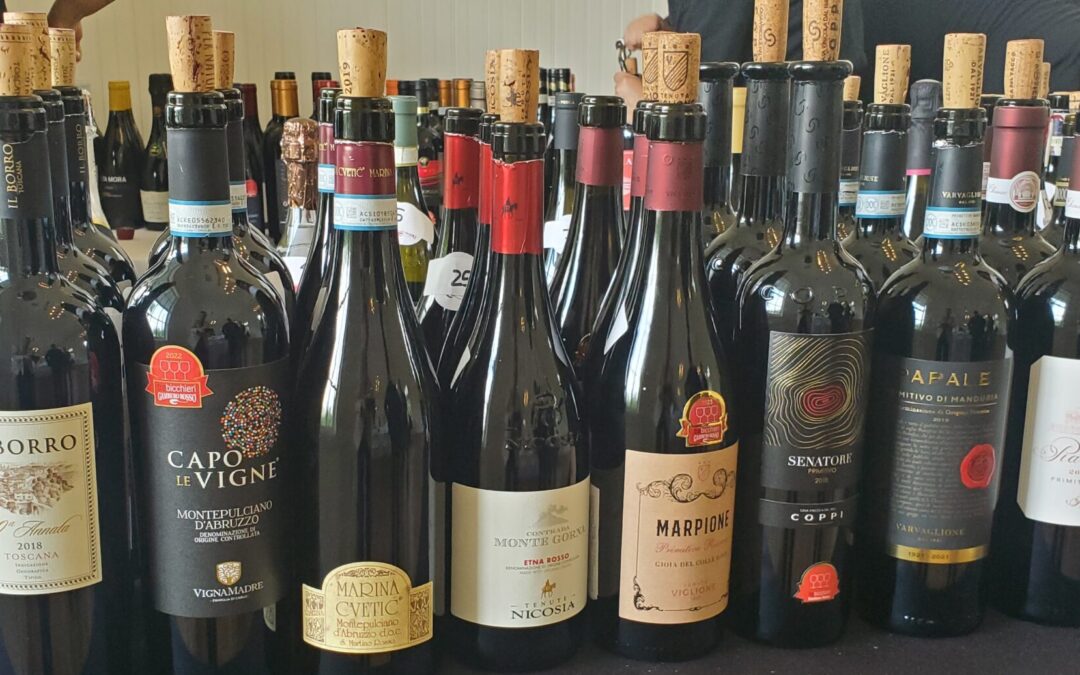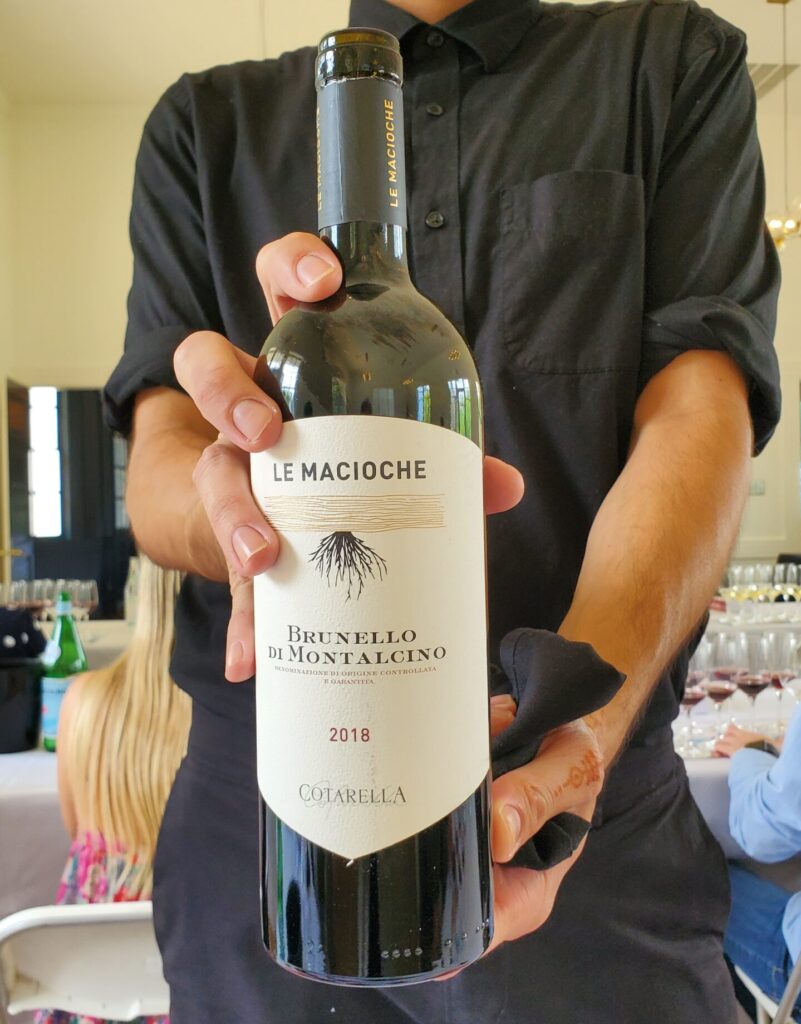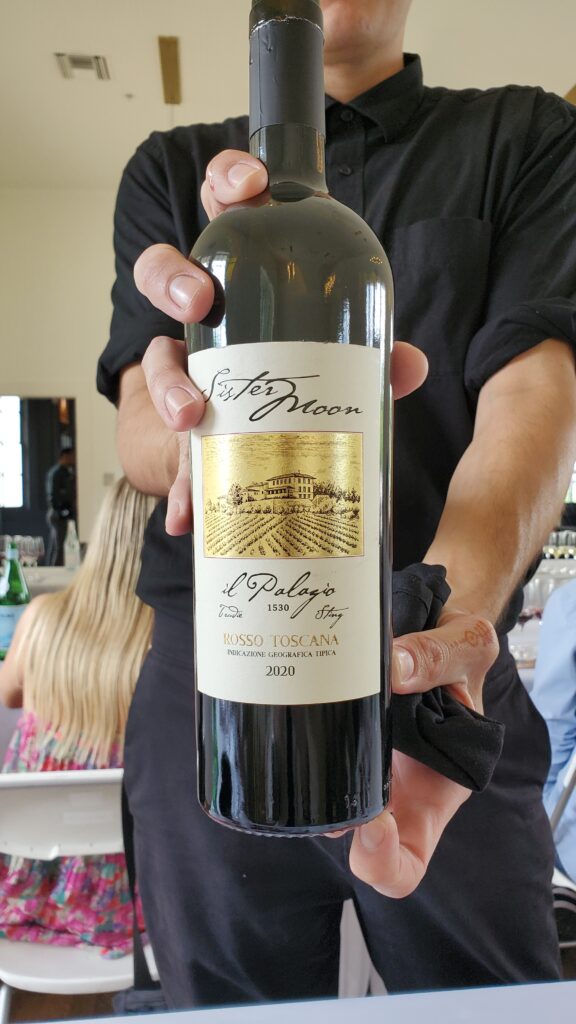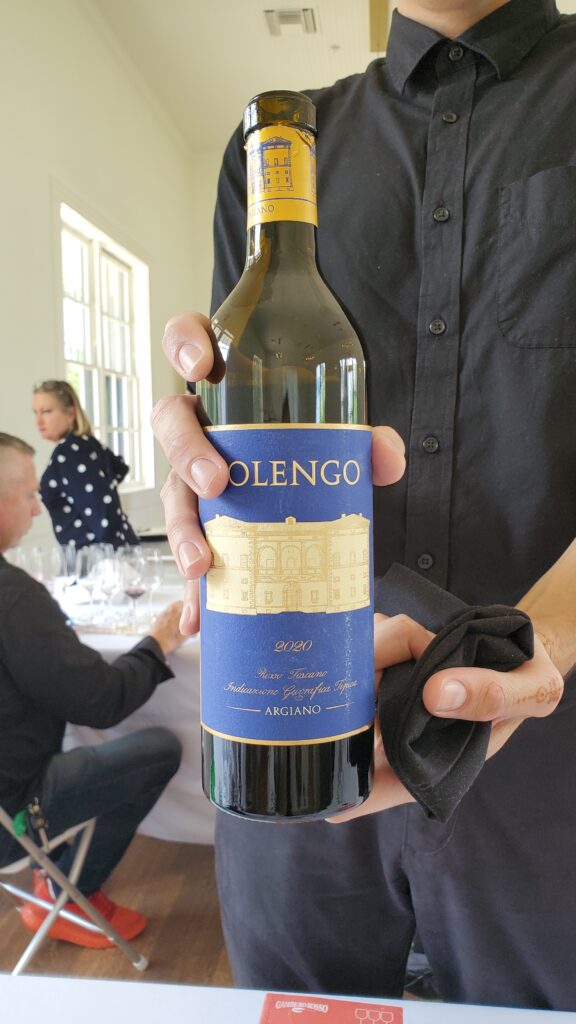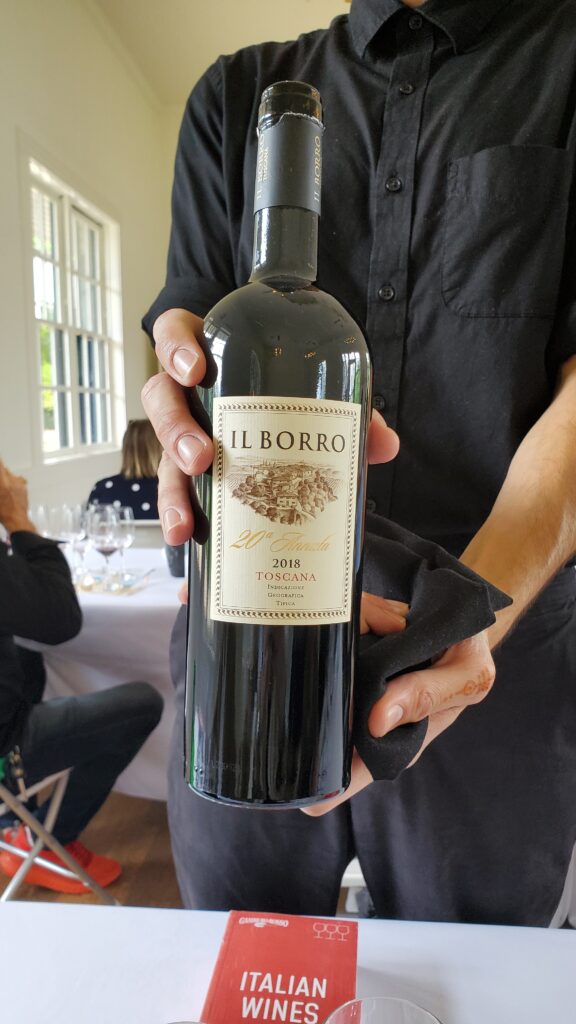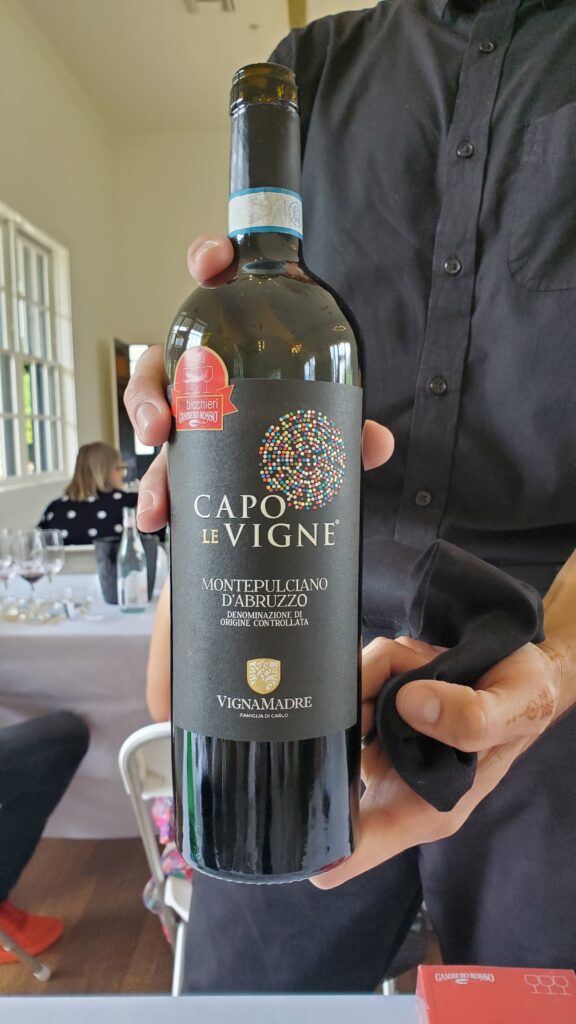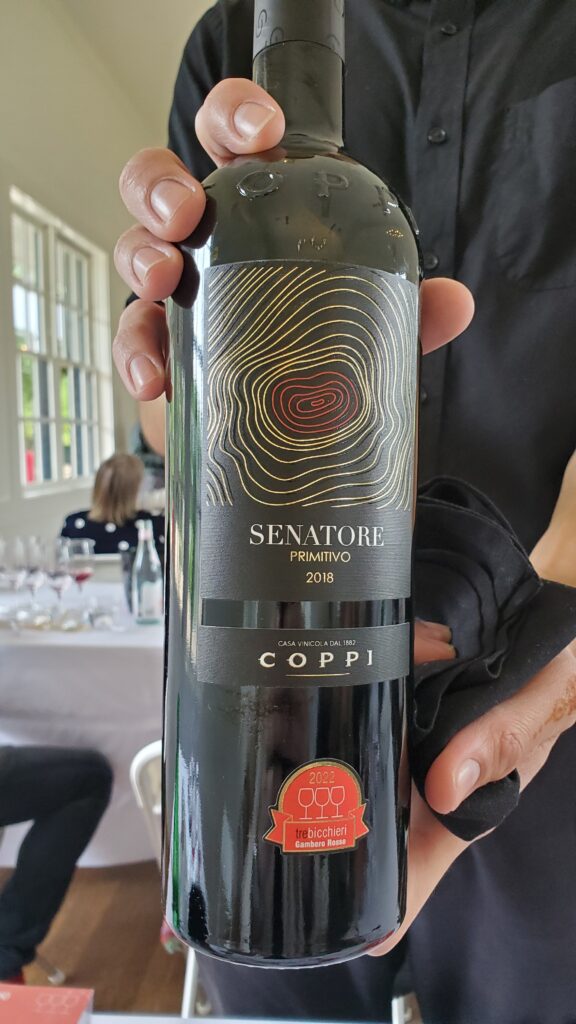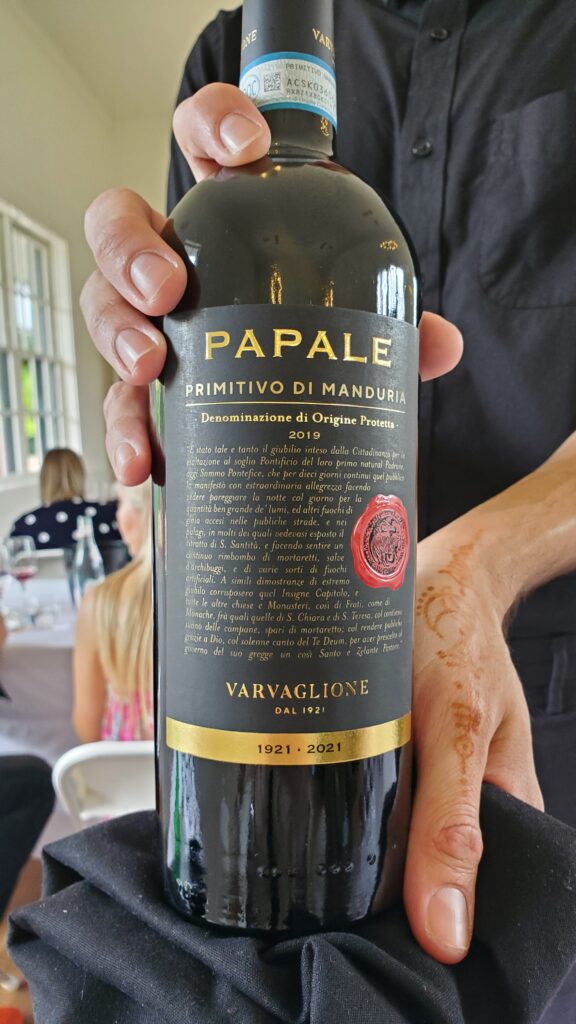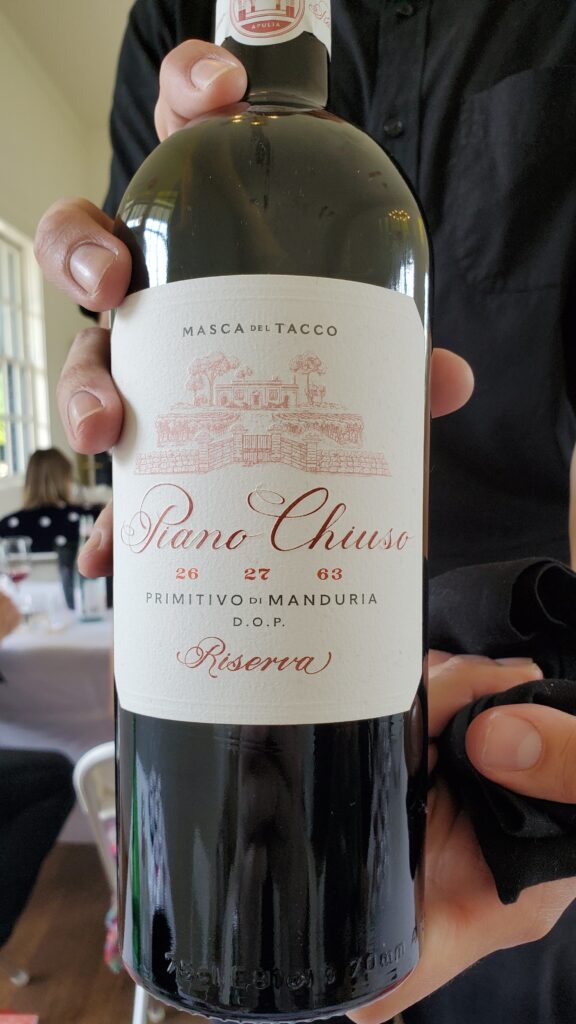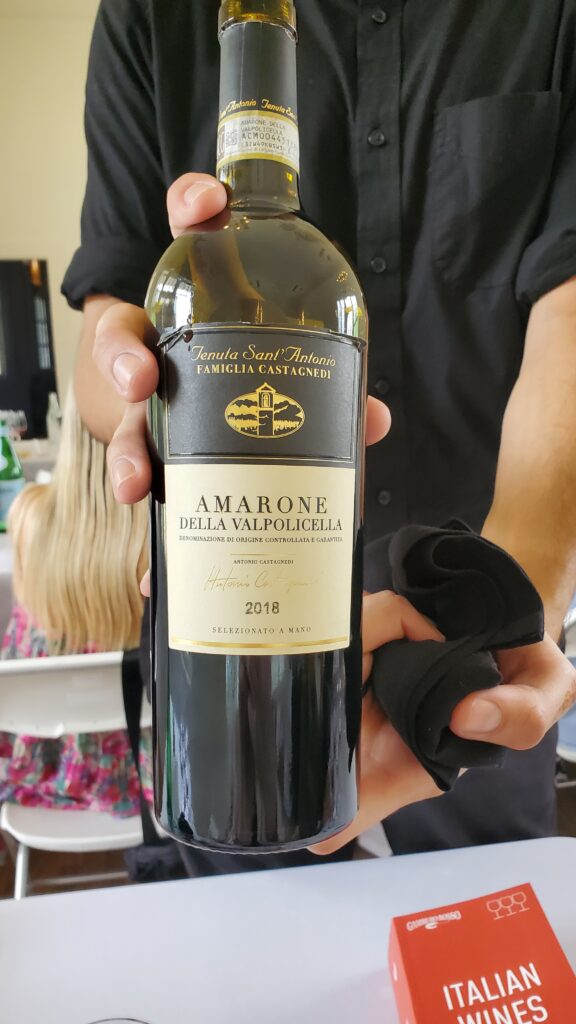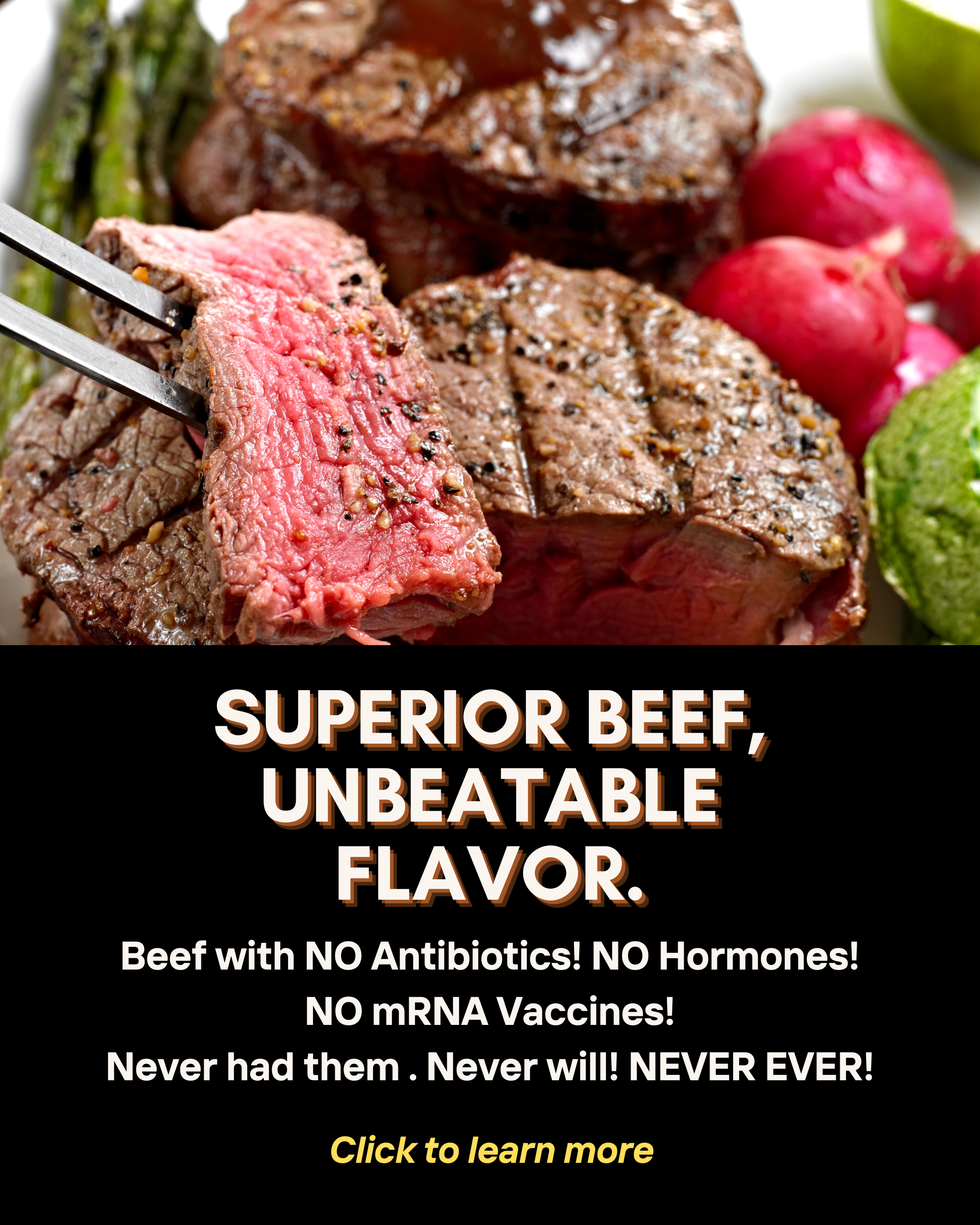by Dale Blankenship and Cat Sansing
How does a new-to-wine consumer find a selection that doesn’t break the budget? There are excellent wine choices if you know where to look. If you put on your Indiana Jones hat, vintage closeouts and discontinued items can be found at small independent wine shops and chain retail wine stores. Another option is to look for wines from under-appreciated wine regions. What are those regions? Well, in the U.S. market it would include Old World regions such as Italy, Spain and some areas of France. In the New World category, it would include Chile, Argentina, Australia and New Zealand. However, to be successful you’ll need a plan of attack – a map to find the treasure trove. For us recently, that map was a masterclass tasting across Italy held in Austin, TX, with Marco Sabellico, Senior Editor of the Vini d’Italia guidebook, published by Gambero Rosso, and wine expert Marzio Taccetti.
Across the U.S. and European wine world, industry studies are showing that Millennials are not drinking wine as much as other adult beverages. Whether it’s due to the higher prices of wine or the mental jitsu necessary to make the right selection, they’re not taking the initial steps into the lifetime journey of discovery. Yes, it can be intimidating and complex at times, but those who accept this learning challenge will be rewarded with many years of fun exploration as well as good health. Moderate wine consumption may be a critical component of a healthy Mediterranean diet model due to the anti-aging benefits of polyphenols.
Italy has a long and rich cultural history stretching back through the millennia and the same can be said for the depth and breadth of its wine varieties, the largest in the world. It is said that Italy has some unique legacy varietals numbering anywhere from 1000 to 2000 types with around 350 designated DOC (Denominazione di Origine Controllata) or DOCG (Denominazione di Origine Controllata e Garantita) covering 20 wine regions. Almost every wine varietal you buy today has lineage or DNA that can be traced back to Italy, Croatia or Georgia.

The Italian wine industry of today represents centuries of family-owned estates as well as estates more recently purchased by celebrities. Italian wines offer delicious choices for everyone. Most wine books will group Italian wine regions into Northern, Central or Southern. With cooler climates being found in the northern areas, warmer through central Italy, and the hottest to the south. Some exceptional and memorable wines that we tasted were a Gavi, Barolo, Chianti, Brunello di Montalcino, Montepulciano d’Abruzzo, Primitivo, and Super Tuscan red blends.
Some of the outstanding wines we tasted
While these wines are in a premium price range, on a scale of 1 to 5, Dale rated these 5+, eliciting “that’s f***ing fantastic!” upon tasting.
The masterclass tasting began with crisp dry and fruity sparkling wine selections from still white wines from the northern regions (cool climate) of Veneto, Friuli Venezia Giulia, Piedmont and Alto Adige. These wines typically exhibit higher acidity, fruit, and herb flavors. The wines from these regions most often found in the American market are Prosecco, Prosecco Rosè, Pinot Grigio and Franciacorta. Any of these are perfect spring and summer sippers as they complement many types of lighter fare and almost any Asian dish.
The tasting then moved towards central Italy (warm climate) where wines show high acidity, ripe fruit, leather, earth and clay flavors. There are many popular selections from this region including Lambrusco, Vermentino, Chianti, Super Tuscans, Montepulciano and Vino Santo.
The tasting ended with big bold riper whites and red wines from Southern Italy and islands (hot climate). These wines can have medium acidity, sweet fruit, leather, cedar and earthy notes. Popular varieties include: Vermentino, Cannonau (Grenache), Primitivo, Negroamaro, Nero d’Avola and Marsala.
Create your own Italian wine tasting experience
Want to make your next gathering with friends or family an Italian wine tasting? Use our guide below wherever you shop for wine. Grab your hat and cue the theme music. The adventure begins …
SPARKLING
There are two primary ways to make sparkling wine: the traditional method, also known as methode Champenoise (Champagne method), or the tank method, a.k.a. Charmat. If the bottle label doesn’t state “Methode Champenoise” or “Methode Traditionale”, then you can assume the wine has been produced using the tank method. Prosecco is produced using the tank method.
Look for: Prosecco, Prosecco Rosè, Franciacorta
CRISP, DRY WHITE or ROSÉ
Look for: Pinot Grigio, Pinot Gris, Pinot Bianco, Falanghina, Fiano, Frascati, Trebbiano, Vernaccia, Garganega (Soave), Orvieto, Sauvignon Blanc
UNOAKED, MEDIUM-BODY WHITE
Look for: Vermentino, Verdicchio, Fiano, Greco, Cortese (Gavi), Grillo, Timorasso
RICH, MEDIUM to FULL-BODY WHITE
Look for: Chardonnay
AROMATIC, SWEET and SEMI-SWEET WHITE
Look for: Gewurztraminer, Moscato Bianco, Moscato d’Asti
FRUITY, LIGHT-BODY RED
Look for: Bardolino, Pinot Noir
SUPPLE, MEDIUM-BODY RED
Look for: Negroamaro, Barbera, Valpolicella, Chianti, Sangiovese, Dolcetto, Carignan, Primitivo, Nebbiolo, Merlot
RICH, BOLD RED
Look for: Amarone, Aglianico, Barolo, Barbaresco, Brunello di Montalcino, Sagrantino, Salice Salentino, Super Tuscan (IGT) blends, Cannonau, Montepulciano d’ Abruzzo, Nero D’Avola
DESSERT WINES
Look for: Malvasia (Vin Santo)

